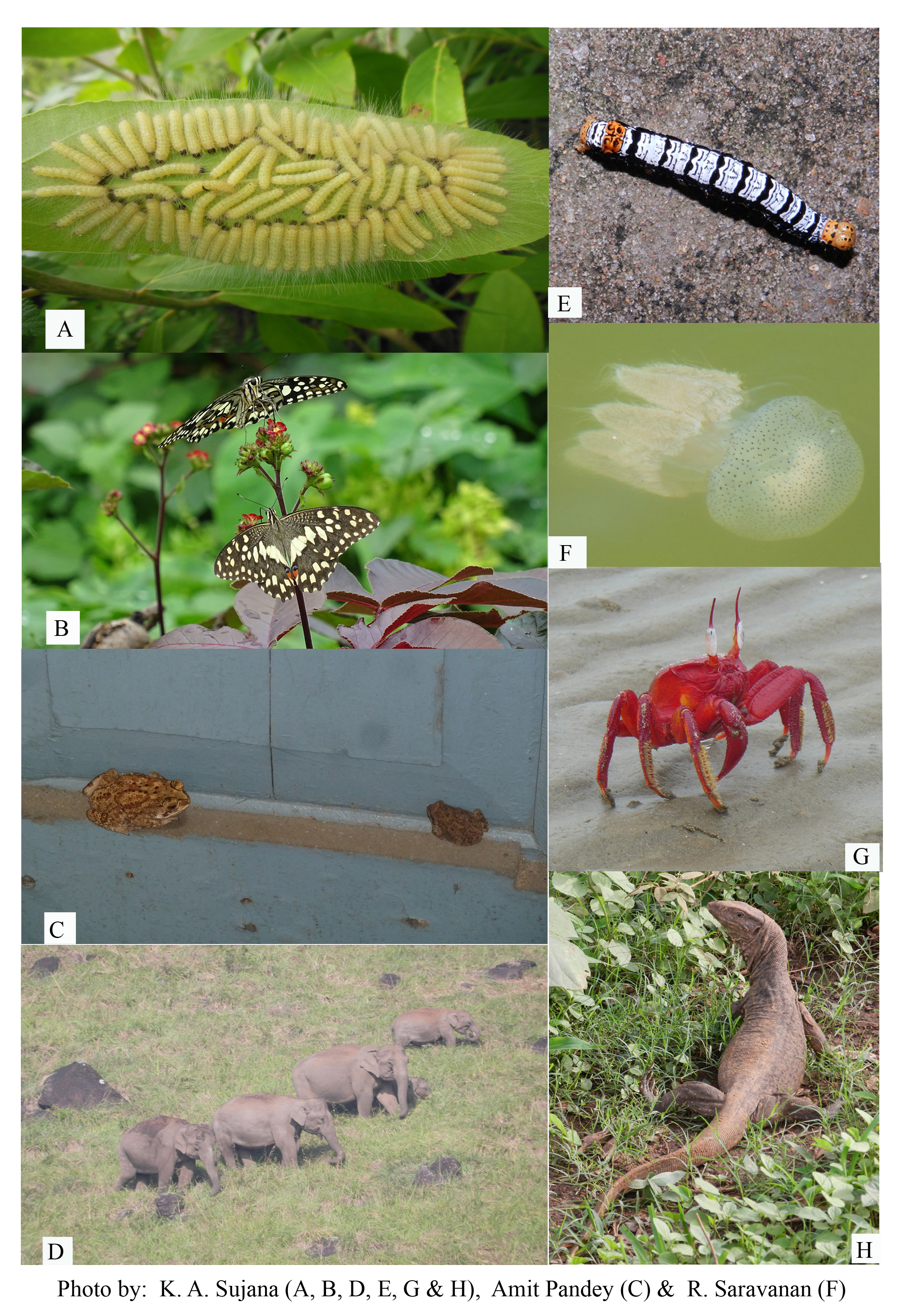BIODIVERSITY
The Convention on Biological Diversity (CBD) which came into being on 29th December 1993 defines biodiversity or biological diversity as the variability among living organisms from all sources, including, 'interalia', terrestrial, marine, and other aquatic ecosystems, and the ecological complexes of which they are part, including diversity within species, between species and of ecosystems. Biodiversity exists at three different hierarchical levels, viz., genetic diversity, species diversity and ecosystem diversity. The status of biodiversity is generally measured in terms of species richness in a given habitat or location. The diversity and distribution of living organisms is depending on various abiotic and biotic factors such as, temperature, rainfall, altitude, soil, geography and the presence of other species. However, the distribution of biodiversity on earth is uneven; it varies greatly across the world. Biodiversity is more in the tropics than in the temperate regions of the world. The biologically rich regions in the world are recognized as biodiversity hotspots. At present, there are 34 biodiversity hotspots in the world that cover only 2.3% of the earth's land surface. These hotspots possess high level of endemism, as well as each one faces extreme threats and already had lost at least 70% of its original natural vegetation. Over 50% of the world’s plant species and 42% of all terrestrial vertebrate species are endemic to these hotspots. There are four biodiversity hotspots in India, namely, Himalayas, Western Ghats together with Sri Lanka, Indo-Burma and Sundaland.
There are 17 mega biodiversity countries found in the tropical regions of the world. Tropical regions are abode for more than two thirds of earth's biological wealth. India is one of the mega biodiversity countries and ranks 10th among the plant rich countries of the world. According to a recent estimation the predicted total number of life or species on earth is 8.7 million globally, of which, 2.2 million are marine. It also suggests that some 86% of the species on earth, and 91% in the ocean, still await description.
Biodiversity and the goods and services provided by ecological systems are essential for life on earth. Habitat loss, spreading of invasive alien species, over-exploitation of biological resources and high level of pollution and global warming are posing impeccable threats to the biodiversity. All species in an ecosystem are interlinked and interdependent; the loss of one species is likely to have profound effect on several other species that ultimately will result in crumpling of the entire system. It is estimated that 34,000 plant and 5,200 animal species are under threatened category. Thus, for the present and future welfare of all life on earth conservation of biodiversity is essential.
Being a party to the CBD (from 5th June, 1992), the Government of India brought Biological Diversity Act 2002 (No. 18 of 2003) and under which the Biological Diversity Rules 2004 made aiming at conservation of biological resources and associated knowledge as well as facilitating access to them in a sustainable manner and through a just process. The National Biodiversity Authority was established in 2003 with head office at Chennai by the Government of India to regulate, conserve and sustainable use of bio-resources of India through the Biological Diversity Act, 2002. Knowing the importance of biodiversity and its need of conservation, to create awareness among the people, ‘International Day for Biological Diversity’ is observed every year on 22nd May and the United Nations General Assembly declared 2011 – 2020, the ‘United Nations Decade on Biodiversity’.
